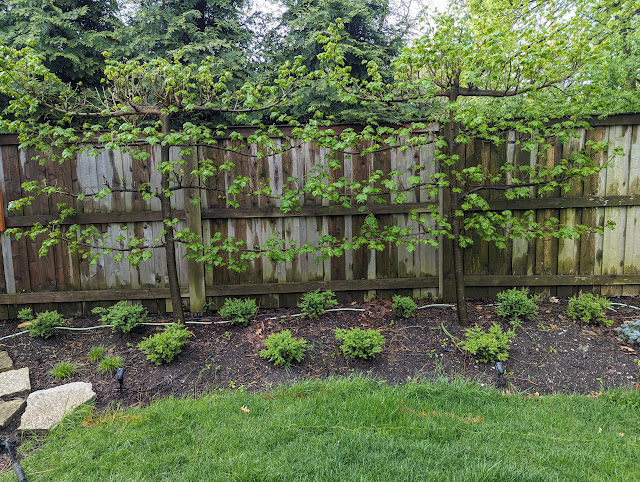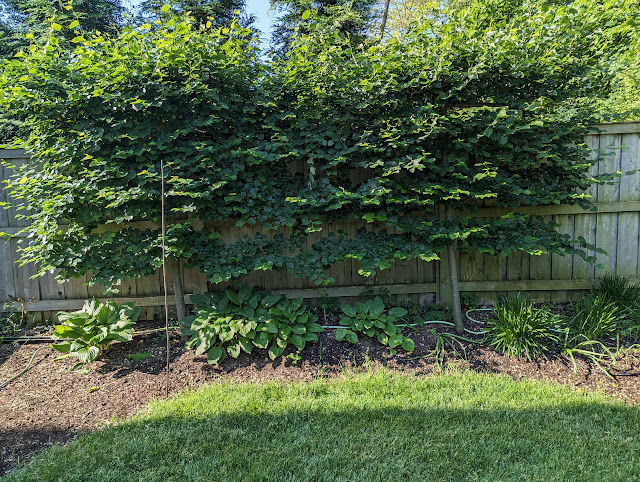Espalier At Muckross House Garden - August 2025

We popped in to a few gardens around Ireland earlier this month (including St. Stephens Green that I posted about yesterday ) and saw a climate that seemed to grow a lot like ours. With a little bit more tropical foliage than we can grow here. Cape Cod garden vibes with the hydrangeas (especially the blue ones), but the Cape has way more Rhododendrons than Ireland. One of the stops was at Muckross House. On the property is a walled garden named (naturally) Muckross Gardens . There's an arboretum, some pruned shrubs, perennials and annual displays. But, if you walk around the perimiter of the walled garden, you'll find something else: espalier. Apple trees trained into fan-shaped espalier held against the warm, stone walls of the garden. I took a few photos and one of the things that I like about how they've pruned these is that they've seemingly thinned out the foliage in spots to show more branching followed by clusters (or cl...





